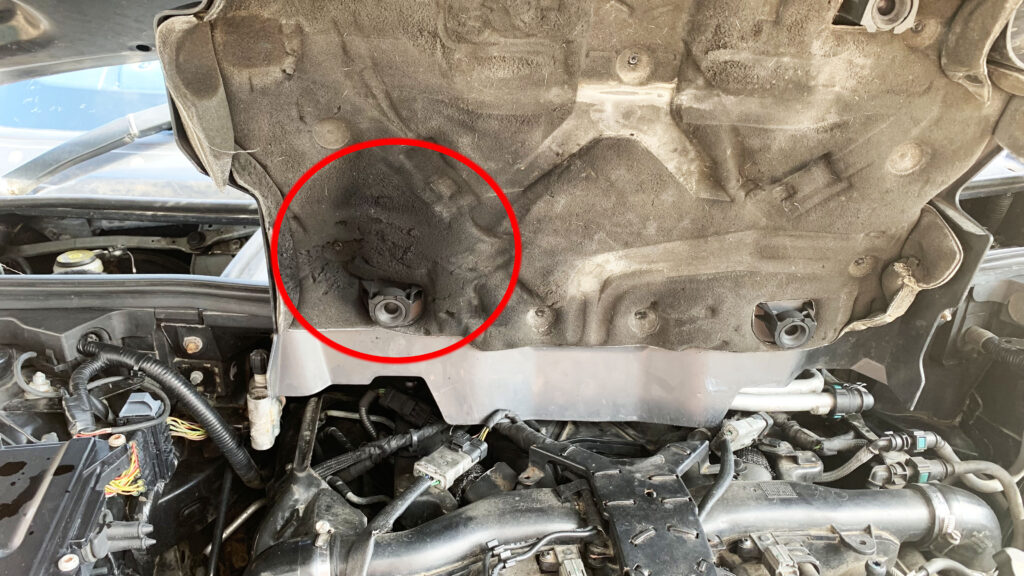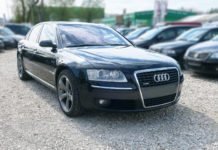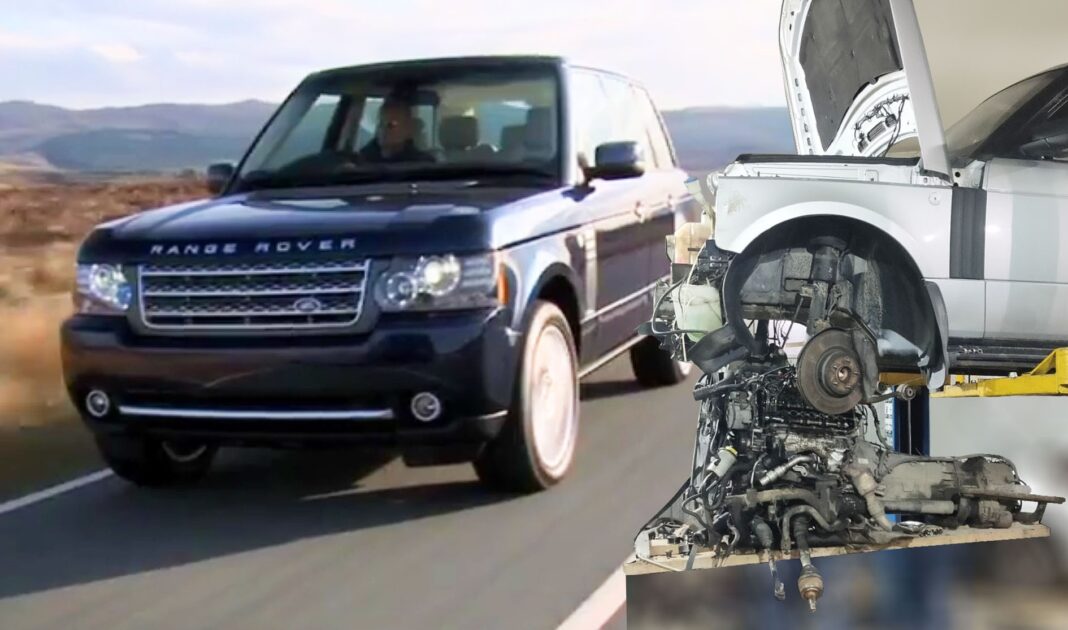I wanted to buy a cheap high mileage 2007 Range Rover L322 with the 3.6 l V8 diesel engine. But before buying shit I like to do a bit of research. This time the research ended up in 2 things: my decision that I will pass and this article with a detailed video about the TDV8 engine. Well, those are almost 3 things…
The 3.6 l V8 diesel engine which has 2 turbochargers can be often found in the 1st gen. Range Rover Sport and in the facelifted Range Rover L322. This engine can have numerous issues like:
- the famous split intercooler hoses (smoke from exhaust, limp mode/loss of power)
- EGR issues
- faulty turbochargers
But there are also some less known things which you should definitely know about if you are interested in these engines. So let’s check them out!
Check the intercooler hoses/turbochargers!!
You should check the intercooler hoses not only for cracks but also for oil. Too much oil will indicate worn turbochargers and since they are mounted on the sides of the engine, replacing them is not easy! In most cases mechanics will remove the whole engine to do this job (not cheap), but it is possible to remove them without removing the engine – “only” with removing the subframe, but again that’s not easy either!
There are 2 oil drain plugs!!
During an oil change you should drain the oil not only from the main drain plug but also from the second oil drain plug – to prolong the lifetime of the turbochargers. The second oil drain plug is the turbo return line drain and over time sludge can build up here which will cause premature turbo failure!
how to change engine oil from 2 drain plugs post

But these issues are not the end of the world, the bigger issue is, that this engine is not really mechanic friendly. It’s simply not easy to work on it and this is the most noticeable if you have to remove the valve covers for example.
Valve cover issues

The valve covers in this engine are not regular valve covers. For some strange reason the engineers decided to integrate part of the intake manifold into the valve covers. To top of that, they are made completely from plastic which is not helping the durability at all. This complex design means, that the valve covers can not only leak oil because of the worn out gaskets, but they can also crack – causing a boost leak.
Valve cover/Intake manifold crack
Most of the time the right-passenger side (drivers side-if UK) intake manifold part of the valve cover cracks somewhere on top. In this case you will experience various symptoms like:
- limp mode-reduced engine performance
- check engine light/fault message
- increased fuel consumption
- black smoke from exhaust during acceleration
- P023 fault code
By the way these symptoms including fault code can be also the symptoms of a faulty turbocharger!
An interesting symptom of this issue can also be a soot stain on the inside of the top engine cover – on picture ↓↓↓↓

The various symptoms are gonna get only worse over time, so be ready to fix this shit. The new genuine valve cover is not cheap at all, but there is an aftermarket replacement which is half of the price. However some owners decided to buy a used valve cover – which can work, or they tried to fix the crack somehow – which most probably is not gonna work for long. But buying the spare part is easy. Removing it on the L322 – that is the fun part !
cracked valve cover/intake manifold bubble test video
Removing the valve covers on the L322 is holy shit
Unlike on the Range Rover TD6 – where there is so much space that you can walk around in the engine compartment, cars with the 3.6 l V8 don’t have much space around the engine. This means that removing the valve covers, valve cover gaskets or even the injectors is not easy at all (to remove the valve covers you have to first remove all the injectors). Long story short: Removing the intake manifold and the associated parts, pipes, hoses and other stuff around the engine is labour intensive, but this is not the fun part. The fun part starts when you have to remove the injectors. Removing the first 3 injectors on both sides is fine, removing the last injectors closest to the firewall is simply not possible.
In this case you have 3 choices:
1. You can remove the whole engine – not easy
2. You can separate the injector so you remove the top part of it – this is not recommended since you will most probably ruin the injector
3. You can unscrew the engine mount bolts and jack up the engine a little to gain more space around the top of it. This is possible and doable, unless your engine mount bolts are rusted out completely. And also accessing the right engine mount is much harder than the left one.
If you want to see this process in more detail then I would recommend you to check out this guys video series where he replaced the valve cover gasket on the left side of the engine. Also if you are gonna do this job and remove everything, then you should definitely get all the injectors at least tested and preventively replace the injector washers as well + also check all the vacuum lines – as they get older they can easily crack on some places !
On the Range Rover Sport it is possible to remove the valve covers and all injectors without lifting up the engine, since there is more space around it.
Other stuff
Except the valve cover oil leak, this engine will also leak from the area between the cylinder heads. Here you can expect oil leak from the oil cooler and oil filter mounting bracket + a coolant leak from the plastic thermostat assembly. You can see these parts only after removing the intake manifold, so replacing the gaskets and the thermostat assembly is not an easy job either, but at least you don’t have to remove or jack up the engine for this.
Oil cooler and oil filter mounting bracket gaskets – the oil cooler is mounted onto the oil filter housing bracket and all of this is mounted between the cylinder heads. The gaskets are not that expensive, but to access them you have to remove and disconnect almost everything on top of the engine so: cabin air filter housing, intercooler pipes, vacuum lines the big plastic intake manifold, lots of connectors, wiring, random pipes and hoses – all of that has to be moved or removed which is time consuming. And since the plastic ages, there is a very high chance that you will break some small plastic part during removal – so keep this in mind.
- oil cooler and oil filter mounting bracket leak symptoms: oil between the cyl. heads and leaking from the back of the engine
- thermostat housing leak symptoms: coolant between the cyl. heads and leaking from the back of the engine

These were some of the things which are worth knowing if you want to buy a TDV8 engine. But if you really want to be an owner of a Range Rover L322, then you should also know about rust issues, gearbox problems or about air suspension issues for example. So lets briefly check out this stuff a bit more closely.
Rust Issues
Right now I’m not gonna talk about rust, since I already did a detailed video about all the possible rust spots of the L322 which you should definitely check out.
Gearbox Issues
The 3.6 l V8 diesel engine in the L322 is always mated to a 6 speed regular automatic gearbox which is not known for premature failure. But after approximately 200 000 km it can develop issues – mostly in cars which never had a gearbox oil change or in cars which were used for towing. Most of the time just the torque converter gets worn, but sometimes the whole gearbox is gonna require a repair. So check the gearbox properly before buying, it has to change gears smoothly without fluctuating RPMs, shuddering or vibrations.
Suspension Issues
In these cars you can have 2 types of air suspension. The regular air suspension with regular shocks, or the adaptive air suspension with electronically adjustable shocks. In cars with this more complex suspension type the stiffness of the shocks can be changed + in this case you can notice a visible wire on top of the front shock absorbers and a small accumulator on the rear shocks. The electronically adjustable shock absorbers are approximately twice that expensive as the regular type + they can sometimes get stuck in the stiffer mode – so keep this in mind. Another thing to keep in mind is, that the air strut leaks are inevitable. But they are not that expensive to buy and you can prolong the lifetime of them. Long story short: dirt and small rocks will stick to the lower area of the struts → as the strut moves the dirt acts like a sand paper → which will cause small cracks over time → and this will result in leaks. So regularly cleaning this area on all of the air struts will extend the lifetime of them.
To summarize things up. The 3.6 l V8 diesel engine is not the worst engine in the world. With proper maintenance it will last more than 400 000 km and even 500 000 km. But you have to be ready to fix the already mentioned stuff either by having enough money or by having skill and willpower. If you don’t have the money or mechanical skill or willpower to fix this stuff, then avoid these cars like the plague!















Thank you for a fantastic review. While I do not understand all the mechanics I got the picture.